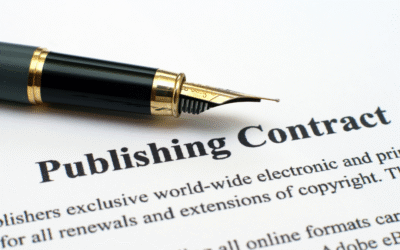Most aspiring authors find themselves wondering where to begin their writing journey. Starting your own book can seem daunting, but breaking it down into manageable steps can make the process smoother and more enjoyable. In this guide, you will discover effective strategies for brainstorming ideas, developing your plot, and setting a writing schedule that suits your lifestyle. With a clear roadmap and dedication, you’ll be well on your way to bringing your literary vision to life.
Finding Your Idea
While starting your book, the first step is to find a compelling idea that resonates with you. Dive deep into your interests, passions, and experiences to uncover themes or stories worth exploring. Consider your audience and the messages you want to convey, as this will guide you in honing your concept into something that feels authentic and meaningful.
Brainstorming Techniques
Idea generation can be a fun and creative process. Use techniques like mind mapping, free writing, or listing out prompts related to your interests. Setting a timer for quick bursts of creativity can enhance your productivity. Don’t filter yourself during this stage; allow every thought to flow, as even the wildest ideas may lead to something brilliant.
Developing a Unique Concept
With the initial idea in mind, it’s time to craft a unique concept that sets your book apart. Reflect on what makes your perspective distinct and how you can blend various elements or genres. Consider combining themes from different genres or infusing personal experiences to create an authentic voice that will attract readers.
Indeed, the process of developing a unique concept involves analyzing the current landscape of literature. Look for gaps in the market, trends in storytelling, or fresh angles on familiar themes. Think about how your background or experiences can inform your narrative, giving you an edge. Engaging with your target audience, collecting feedback, and embracing originality will help you refine your concept into something truly distinctive.
Planning Your Book
The process of planning your book is imperative to establish a solid foundation for your writing project. By taking the time to outline your ideas and structure, you can streamline your creativity and set achievable goals. This stage helps you to clarify your thoughts, ensuring that your narrative remains focused and engaging throughout the writing process.
Creating an Outline
Among the many strategies to ensure your book has a coherent flow, creating an outline stands out as an effective tool. Your outline serves as a roadmap, helping you organize ideas, chapters, and key events. It allows you to see the big picture and adjust any elements that may disrupt the overall narrative before you probe the writing stages.
Setting a Writing Schedule
Setting a writing schedule is a vital part of making consistent progress on your book. By allocating specific blocks of time for writing, you establish a routine that conditions your mind for creativity and productivity. This leads to better focus and helps you build momentum, ultimately advancing your project.
Considering your personal commitments and energy levels, find times that work best for you to write regularly. Whether it’s early mornings, late evenings, or weekends, consistency is key. Over time, as you adapt to your writing schedule, you’ll cultivate a habit that not only enhances your productivity but also enriches your creative process.
Writing the First Draft
Assuming you’ve outlined your ideas, it’s time to explore writing your first draft. This is where you allow your creativity to flow freely without worrying about perfection. Focus on putting your thoughts into words, knowing that you will revise later. Embrace the process, and don’t hesitate to experiment; this draft is about discovery. Trust that each word pushed onto the page brings you one step closer to finishing your book.
Overcoming Writer’s Block
About writer’s block—it affects every writer at some point. To tackle it, give yourself permission to write poorly; the goal is to keep your fingers moving. Try changing your environment, setting a timer for short writing sprints, or brainstorming new ideas. Engaging in different activities outside of writing can also spark inspiration. The key is to stay patient and keep creating, even if it feels tedious at times.
Maintaining Momentum
Overcoming obstacles in your writing journey requires commitment to maintain momentum. Break your writing goals into manageable chunks, set aside dedicated time each day to focus, and celebrate small achievements. Establishing a routine helps solidify your writing habit. Find moments in your day, whether early morning or late at night, that work best for you and stick to that schedule.
Maintaining focus during your writing sessions is imperative for progress. Use tools that block distractions, and create a writing environment that nurtures creativity. If you ever find your enthusiasm dwindling, revisit your motivations for writing the book; this can reignite your passion. Surrounding yourself with a supportive writing community can also bolster your energy and keep your spirits high as you work towards finishing your first draft.
Revising and Editing
All writers know that the first draft is only the beginning. Revising and editing are necessary steps in the writing process that transform your rough ideas into a polished manuscript. This phase involves checking for clarity, structure, grammar, and style. Take your time to refine your work, as this is where your story truly takes shape.
Self-Editing Tips
For effective self-editing, keep these tips in mind:
- Take a break before you start editing.
- Read your manuscript out loud.
- Focus on one aspect at a time (e.g., grammar, pacing).
- Use editing tools to catch common mistakes.
Assume that your first draft will need significant revisions.
Seeking Feedback from Beta Readers
Among the best ways to improve your manuscript is by seeking feedback from beta readers. These are individuals who read your book before publication and provide valuable insights. Their fresh perspectives can highlight parts of your story that may be unclear, unengaging, or well-liked. Implementing their feedback will help you make your book even better.
With feedback from beta readers, you gain objective insights that can help address issues you might overlook. Select readers who reflect your target audience, as they’ll provide relevant reactions about your work. Encourage honest opinions and specific criticisms to improve clarity and engagement. This collaborative process not only enhances your manuscript but also prepares you for potential reader responses once it’s published.
Formatting Your Manuscript
For a professional presentation, it is vital to format your manuscript correctly. This involves setting the right margins, line spacing, and font style. Most publishers and agents prefer submissions in a standard format, which enhances readability and demonstrates your attention to detail. Proper formatting not only makes your work accessible but also reflects your seriousness as a writer.
Industry Standards
At the heart of manuscript formatting are some established industry standards. Typically, your text should be double-spaced, using a legible font like Times New Roman or Arial in 12-point size. Margins should generally be set to one inch on all sides, and pages must be numbered consecutively. Adhering to these conventions signals professionalism and makes it easier for agents and editors to engage with your work.
Preparing for Submission
Beside formatting, you also need to consider how to prepare your manuscript for submission. This means creating a comprehensive cover letter, writing an engaging synopsis, and ensuring that your manuscript is thoroughly proofread. These elements, when combined with a well-formatted document, can significantly increase your chances of getting noticed.
Another important aspect of preparing for submission is researching your target agents or publishers. Tailor your query letters and submission materials to align with their specific requirements. This may include word counts, particular genres, or even specific formatting requests. By carefully following submission guidelines and customizing your approach, you enhance your likelihood of making a positive impression. Additionally, consider seeking feedback from peers or writing groups to refine your manuscript before sending it off.
Publishing Options
After crafting your manuscript, it’s time to explore your publishing options. You can choose between traditional publishing, which typically involves finding an agent and submitting your work to publishing houses, or self-publishing, where you take complete control of the process. Each option has its benefits, so weigh them carefully to decide what aligns with your goals as an author.
Traditional vs. Self-Publishing
Around the publishing landscape, traditional publishing offers prestige and potential marketing support, whereas self-publishing provides you with flexibility and total creative control. If you’re drawn to the idea of sharing your story without the constraints of a publisher’s guidelines, self-publishing might be for you. Alternatively, if you seek professional backing and industry credibility, then traditional publishing could be your path.
Understanding Copyright and ISBNs
Beside selecting a publishing route, it’s necessary to grasp copyright and the role of ISBNs in your publishing journey. Copyright protects your intellectual property, ensuring no one can use your work without your permission. An ISBN (International Standard Book Number) uniquely identifies your book in the marketplace, making it easier for retailers and readers to find.
At the heart of your publishing journey, understanding copyright ensures you retain ownership of your creative work, shielding it from unauthorized use. Obtaining an ISBN is paramount, as it not only helps in tracking your book but also lends it legitimacy in the eyes of retailers and libraries. Familiarizing yourself with these elements will empower you to navigate the publishing world more confidently, ensuring your hard work is protected and recognized.
Marketing Your Book
Unlike traditional publishing where marketing may be managed for you, self-publishing requires you to actively promote your book. Understanding your target audience and developing a solid marketing plan will help your book gain visibility. Consider both online and offline strategies that could work for your genre, and don’t underestimate the power of networking to spread the word about your work.
Building an Author Platform
Platform is necessary for establishing your identity as a writer and reaching potential readers. You should focus on creating a professional website, blogging, and engaging with your audience through newsletters. This foundation will help you cultivate a loyal following, setting the stage for your book’s release.
Utilizing Social Media and Promotions
Promotions play a vital role in marketing your book. Leverage social media platforms to create buzz around your work and engage with readers directly. Consider running targeted ads or giveaways, joining relevant groups, and collaborating with other authors to maximize your reach.
Plus, using social media effectively can help you build a dynamic community around your writing. Regularly share content that resonates with your audience, such as behind-the-scenes glimpses of your writing process or insights related to your book’s themes. Engaging with readers through comments and direct messages fosters connection, allowing you to nurture relationships that can contribute to your book’s success. Don’t forget to use eye-catching visuals, hashtags, and even short videos to capture attention and draw readers to your work.
To wrap up
Hence, starting your own book involves a thoughtful combination of planning, creativity, and dedication. Begin by clarifying your ideas and outline your plot or subject matter, then set aside regular writing time to cultivate your manuscript. Embrace feedback from trusted peers, and be willing to revise your work. Additionally, consider your publishing options, whether traditional or self-publishing, and promote your book effectively. By following these steps and maintaining your passion for storytelling, you will navigate the journey of authorship with confidence.








